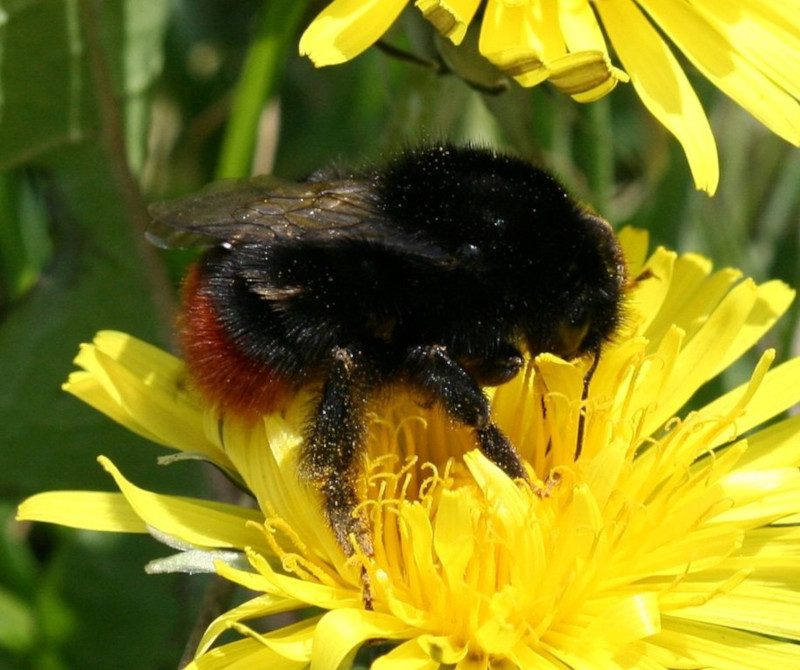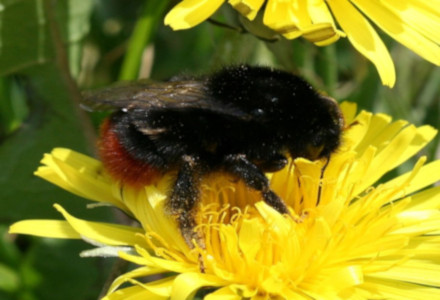
Red-Tailed Bumblebee Facts
- This beautiful insect quite understandably goes by the simple common name of the Red-Tailed Bumblebee. Its official scientific name, meanwhile, remains much more difficult to pronounce. That’s because it’s the known to scientists as Bombus lapidarius.
- Regardless of the term one uses for it, however, it’s a lovely and fascinating member of the Bombus Genus. It’s also a locally important species. The first official recognition of the remarkable invertebrate, furthermore, occurred in the year 1758.
- This acknowledgement of it as a separate species took place as a result of the efforts of an individual well known in the annals of entomology. More specifically, the renowned Swedish botanist and zoologist Carl Linnaeus made the original identification.
- Most fortunately, the amazing Red-Tailed Bumblebee appears to be maintaining a sizeable and stable population base. Moreover, this tendency further seems to hold true throughout the entirety of its natural habitat range. That’s a rarity today.
- The IUCN therefore presently has no listing for it on the organizations Red List of Threatened Species. That fortunate status nonetheless remains at some risk, however. This holds true due to various factors, many of them shared by countless other species.
- For one, it does appear to be declining in numbers in some agricultural areas. Due to this, it’s now considered Near Threatened in specific portions of its range. Its greatest potential threat, though, undoubtedly consists of the ongoing threat of climate change.
Related Articles
Red-Tailed Bumblebee Physical Description
The gorgeous Red-Tailed Bumblebee, in fact, bears a striking resemblance to yet another variety of bumblebee sharing its range. This fact frequently makes identifying the correct species difficult for any but the most highly trained and experienced observer.
The fabulous arthropod also displays a moderately strong degree of the physiological trait of sexual dimorphism. In its particular case, this characteristic manifests itself in terms of both color and size. Males of the species tend to be slightly smaller than females.
It further displays this gender-based difference in terms of patterns of color. More precisely, however, the males of this awesome insect present three bands of yellow, one at the base of the abdomen, and two on the thorax. It additionally has the standard red tail
Females of the insect, including the queen usually present a slightly different appearance. Firstly, these lack any of the yellow bands. Secondly, this gender of the invertebrate displays a more extensive red-colored section, covering roughly half the abdomen.
Males of the Red-Tailed Bumblebee attain an average overall body length of between 0.55-0.63 in (14-16 mm). The females, meanwhile, develop in a slightly greater size range. These average between 0.43-0.63 in (11-16 mm) in length. Both have an average-sized proboscis.
- Kingdom: Animalia
- Phylum: Arthropoda
- Class: Insecta
- Order: Hymenoptera
- Family: Apidae
- Genus: Bombus
- Species: B. lapidarius
Red-Tailed Bumblebee Distribution, Habitat, and Ecology
There’s very fortunate news for those who appreciate the beauty of Nature. That’s due to the fact that the Red-Tailed Bumblebee evolved as native to a relatively broad swathe of the world. More specifically, it remains native to a particular portion of the continent of Europe.
With further precision, in this region population concentrations appear throughout the entire region. The creature does, however, appear in greater concentrations in certain areas. These include the countries of Greece, Britain, Sweden, Finland, and Germany.
Sadly though, in Ireland its numbers seem to be declining rapidly. Wherever the insect lives, however, it proves itself to be highly adaptable in terms of where it makes its home. That’s because population groupings manifest in several different habitat types.
These locations even include such public regions as gardens and parks. It most commonly chooses to live in areas consisting of very open terrain. Unlike some varieties of related species, though, it generally avoids living in areas of moderate to heavy forestation.
The Red-Tailed Bumblebee makes its appearance in the summer, between June and August. Being social insects, like many Hymenoptera, all members of the hive work together. In its case, there’s little hierarchy among workers, just between them and the queen.
Most types of bumblebees generally stay close to their hive when foraging. This one, however, tends to roam relatively great distances in search of food. Some individuals, in fact, venture as much as 5,741 ft (1,750 m) from the hive. For its kind, that’s a long distance.
The hives themselves, meanwhile, appear in various types of locations. In this it’s an opportunistic species. Locations for nests include such unexpected areas as under large stones or fallen logs. Colonies remains small, though, rarely exceeding 200-300 individuals.
Species Sharing Its Range
Check out our other articles on 4 Fabulous Marine Shrimp, Indian Bullfrog, Cypripedium calceolus, Victoria Falls, Swift Fox, Tufted coquette, Crocodilefish, Jackson’s Chameleon

